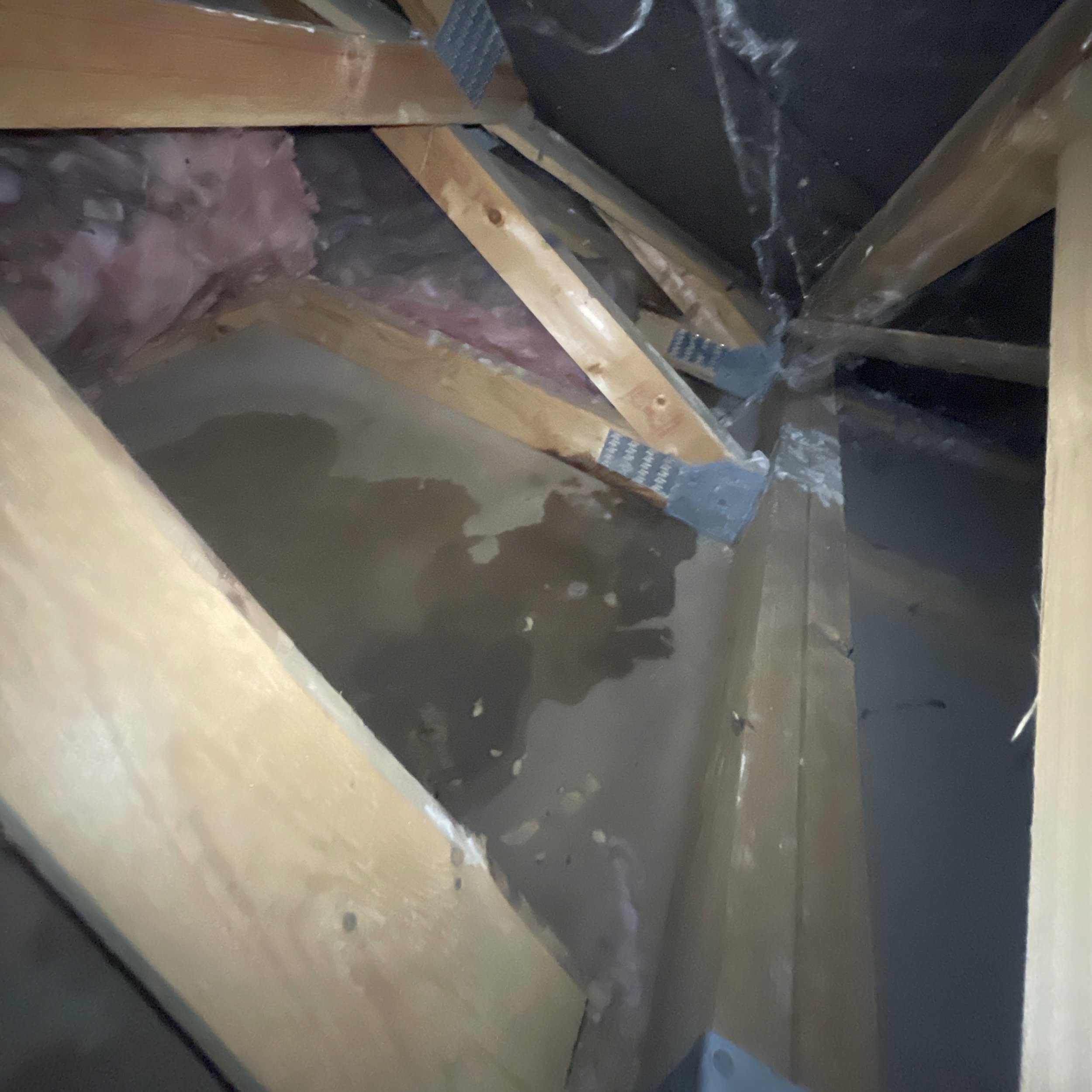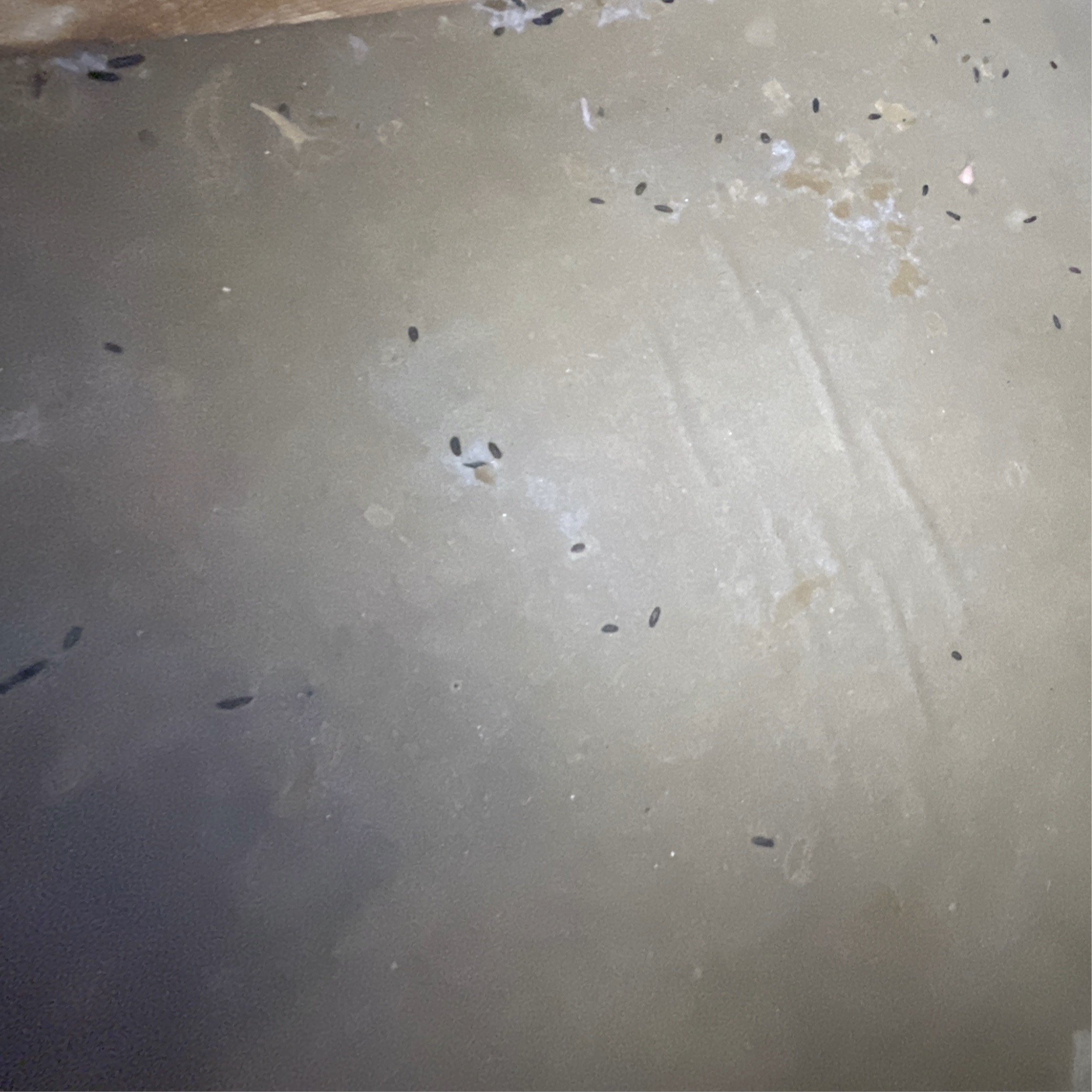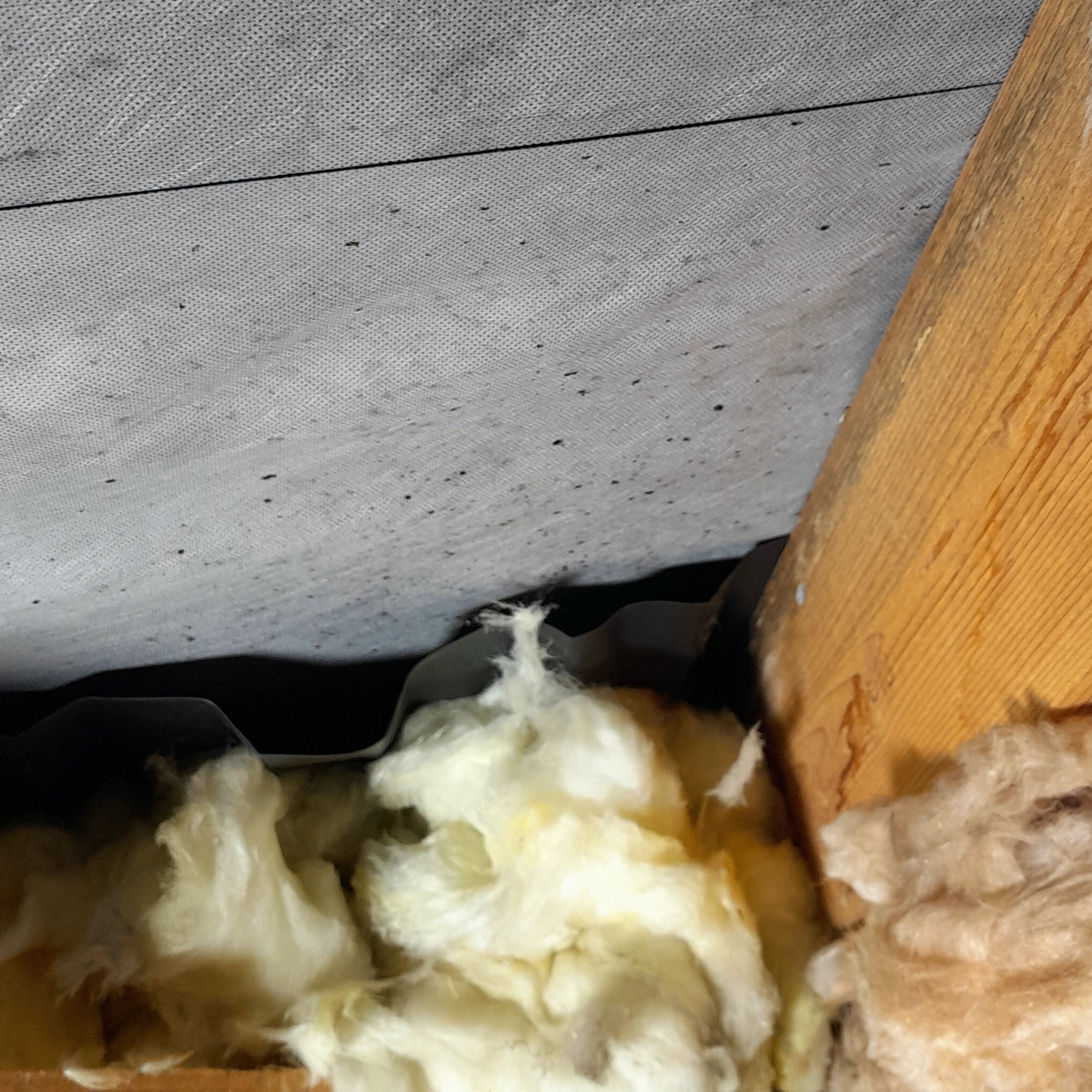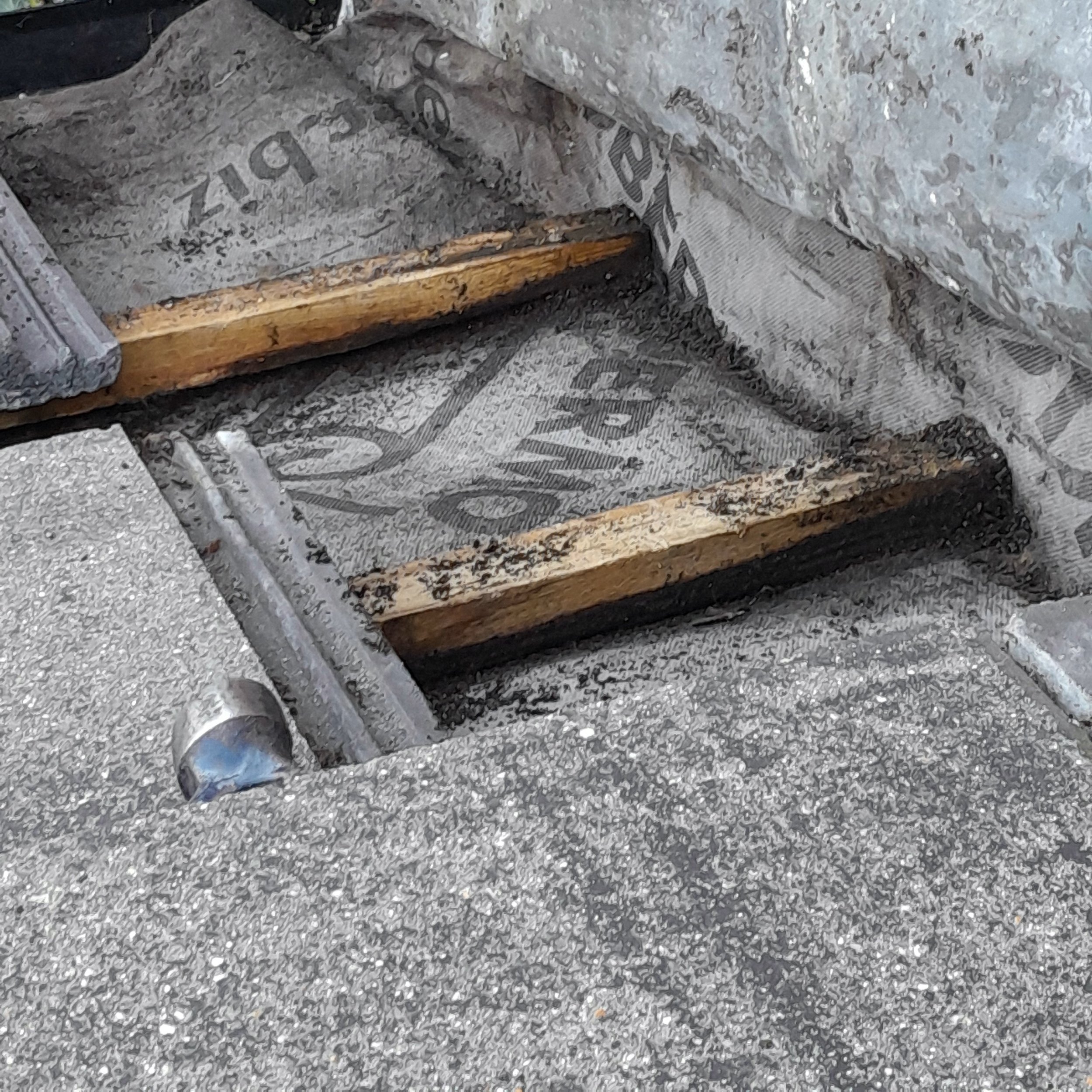Defects gallery
Below are some common defects we encounter in our day-to-day repair and maintenance works. If you recognise or suspect any of these defects in your property, get in touch – we can survey the issues and propose a solution that works for you.

Defective verge mortar. Your bedded verge has reached the end of its design life. If it is not re-pointed, it is a possible point of water ingress, and a point of entry for birds and insects. Mortar can fall out in large chunks – it is a potential hazard for anyone walking underneath.

Ceiling stains. Water is getting into your loft space. Further investigation is needed to identify the point of water ingress.

Damp ceiling visible in the loft. Water is pooling at the lowest point in your loft space. A survey of your loft space will confirm the point of water ingress.

Rodent droppings. You have, or previously have had, rodents occupying your loft space. Contact a pest control company who can safely remove the rodents if still present.

Tile dislocation. Your tiles have become dislodged, causing a point of water ingress into your loft space. Birds may also be able to get into your loft space and nest if the gap is large enough.

Mould spots on underlay. You have a build-up of moisture in your loft space with inadequate ventilation.

Underlay tear. Your roofing underlay has either reached the end of its design life, or something has caused a physical tear. It is a potential point of water ingress if your roof coverings fail.

Premature timber rot. Water is pooling at the end of your battens because there is an insufficient drainage system installed.

Tile slippage. Your roof tile has slipped from its installed position. Its original position is now a point of water ingress. You may find the tile in your gutter, or pieces of it on the floor where is has fallen onto the ground.